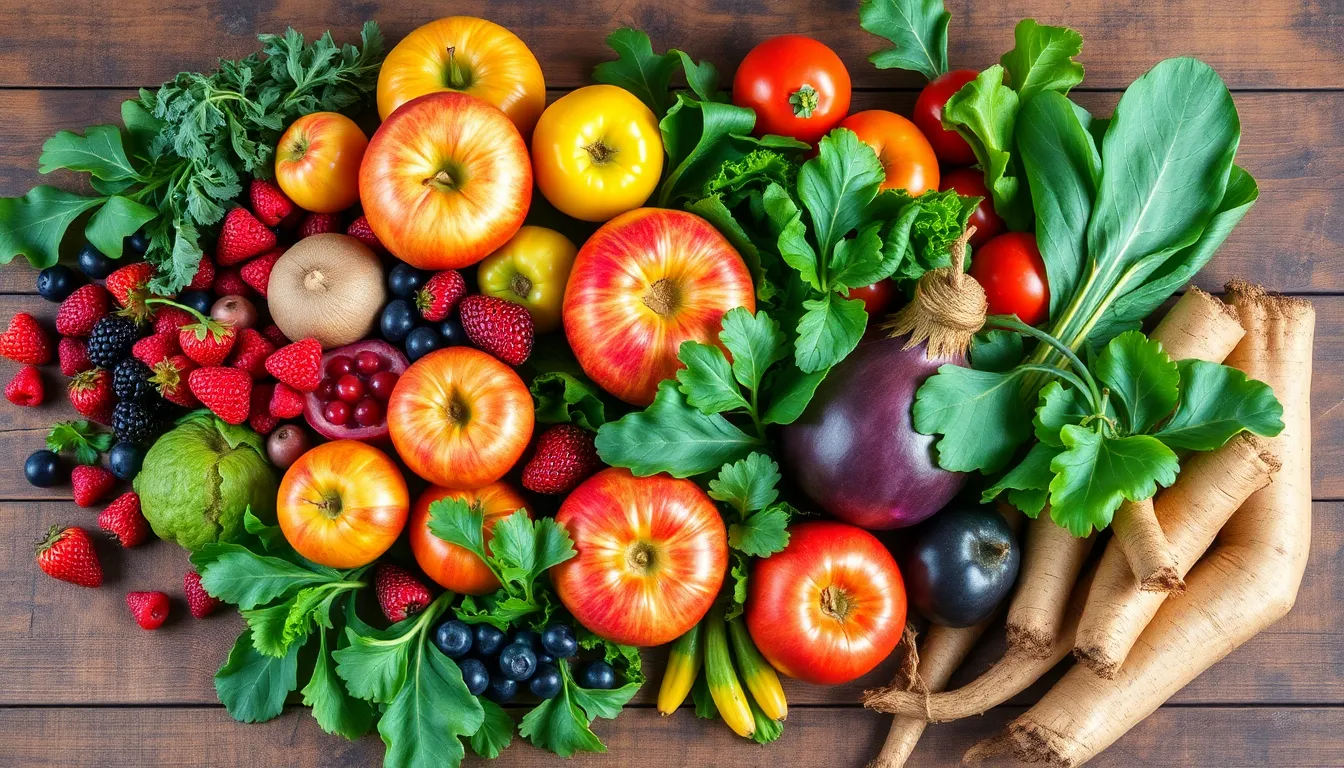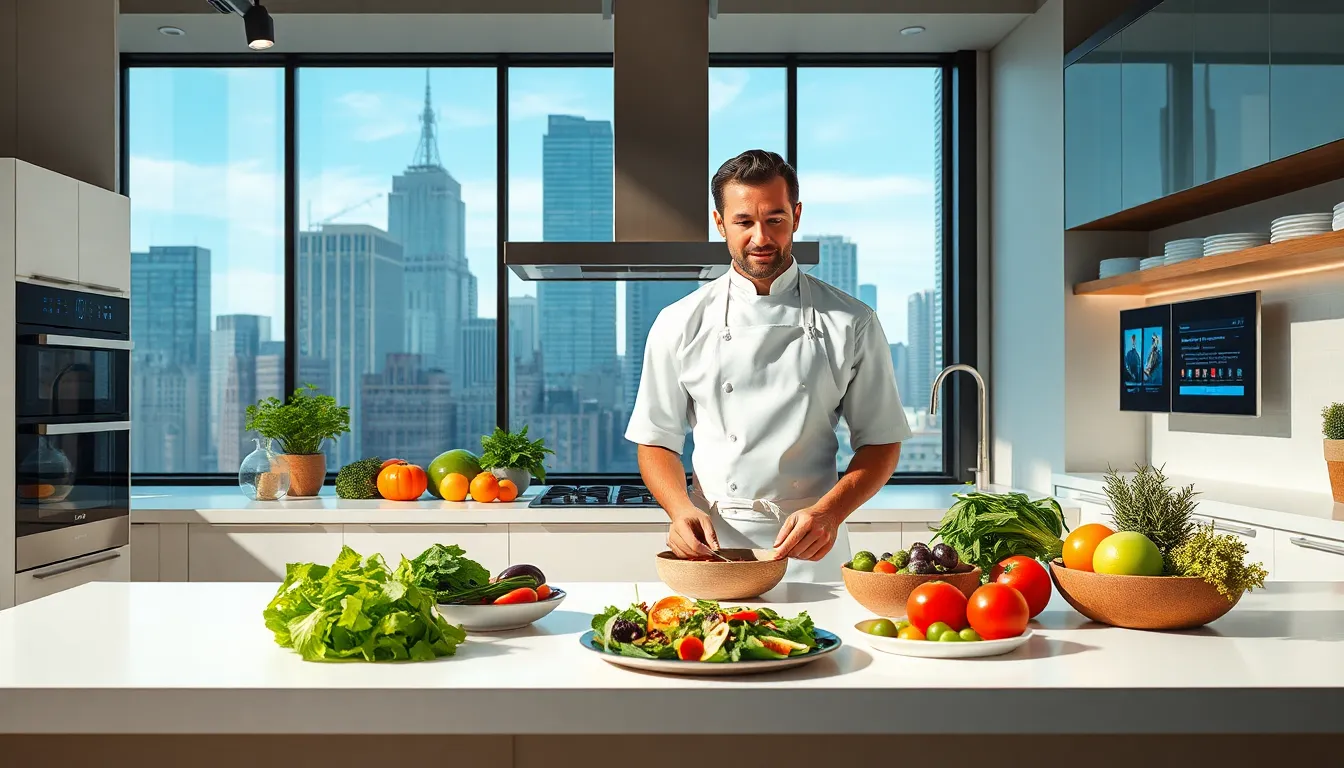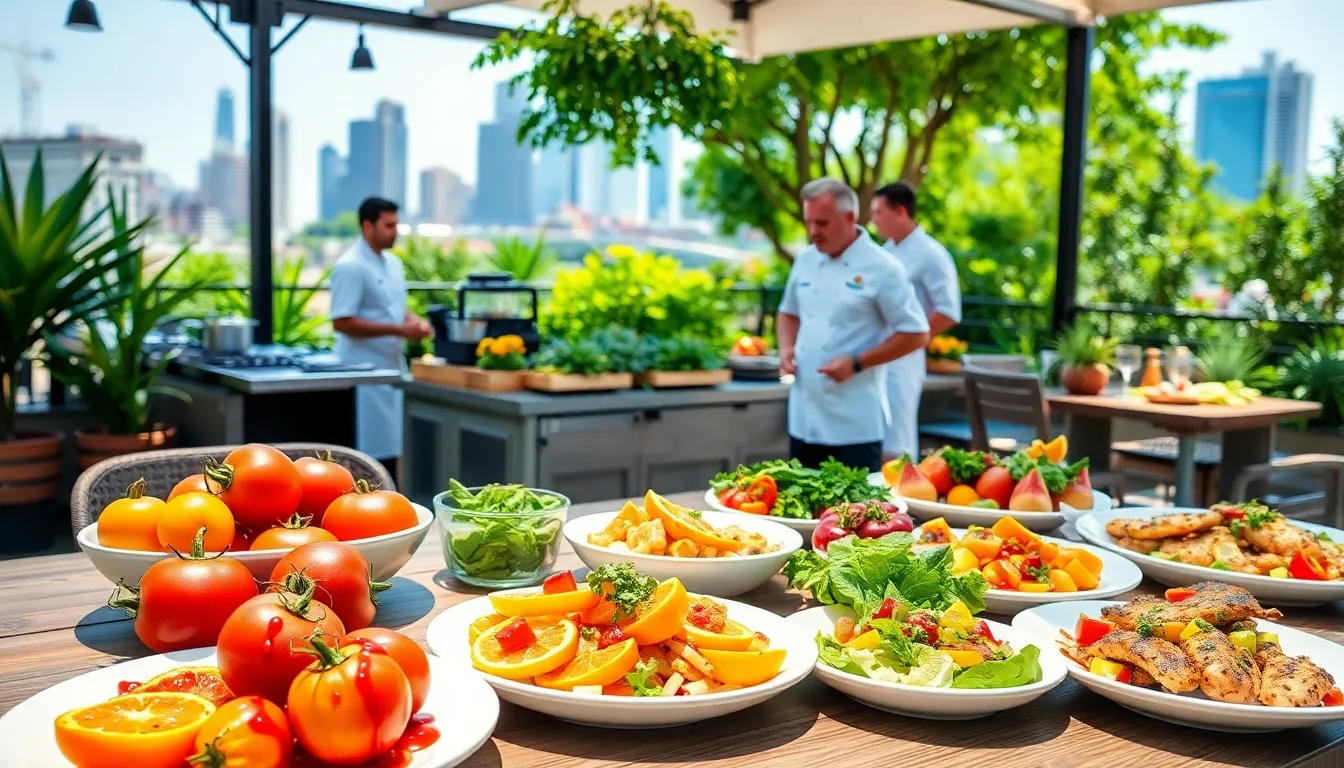Table of Contents
ToggleImagine a world where cavemen roamed free, feasting on delicious meats and fresh veggies, while avoiding the perils of processed foods. Sounds dreamy, right? Welcome to the Paleo lifestyle, where the focus is on whole, nutrient-dense foods that would make even a Neanderthal proud. Whether you’re a seasoned Paleo enthusiast or just dipping your toes into the world of primal dining, there’s a treasure trove of mouthwatering recipes waiting to be discovered.
From hearty breakfasts that kickstart your day to indulgent dinners that satisfy even the pickiest eaters, Paleo recipes offer a delightful twist on modern cooking. Say goodbye to boring salads and hello to flavorful dishes that nourish the body and tantalize the taste buds. Get ready to unleash your inner caveman and transform your kitchen into a culinary haven with these easy-to-follow, delectable Paleo recipes.
Understanding Paleo Recipes
Paleo recipes emphasize whole foods that mimic the dietary habits of early humans. This culinary approach focuses on ingredients like fruits, vegetables, nuts, seeds, meat, and fish, avoiding processed items and grains.
What Are Paleo Recipes?
Paleo recipes consist of meals free from refined sugars, dairy, and grains. These dishes prioritize fresh, nutritious ingredients that promote well-being. Popular examples include hearty vegetable stir-fries, grilled meats, and fruit-based desserts. Adhering to these recipes fosters a connection to natural food sources, encouraging healthier eating habits and lifestyle choices.
Benefits of Following Paleo Recipes
Following Paleo recipes supports various health advantages. Increased intake of whole foods can lead to improved energy levels and weight management. Nutrient-dense ingredients typically found in these meals promote better digestion and enhanced mental clarity. Moreover, many people experience reduced inflammation and improved immunity. Enjoying a diverse array of flavors and meal options maintains culinary interest while adhering to nutritional needs.
Key Ingredients in Paleo Recipes

Paleo recipes focus on whole, nutrient-dense ingredients that resemble early human diets. Understanding key components enhances meal preparation and enjoyment.
Fruits and Vegetables
Fruits and vegetables serve as foundational elements in Paleo recipes. Berries, apples, and bananas offer natural sweetness and fiber. Leafy greens, such as kale and spinach, provide essential vitamins and minerals. Root vegetables like sweet potatoes and carrots deliver hearty textures and flavors. These ingredients promote weight management and improve overall health, aligning with the Paleo ethos of connecting with nature.
Meats and Fish
Meats and fish stand at the core of the Paleo diet and provide high-quality protein sources. Grass-fed beef, free-range poultry, and wild-caught fish deliver beneficial omega-3 fatty acids and nutrients. Lean cuts offer diverse meal options, from grilled steaks to hearty soups. Incorporating these proteins supports muscle health and can enhance energy levels effectively. Prioritizing fresh and responsibly sourced meats fosters a sustainable approach to eating.
Nuts and Seeds
Nuts and seeds add crunch and nutrition to Paleo recipes. Almonds, walnuts, and pecans offer healthy fats, while chia and flaxseeds provide omega-3s and fiber. These ingredients serve as satisfying snacks or useful toppings for salads and smoothies. Portion control remains important, as calories can add up quickly. Their versatility enriches meals, promoting satiety and enhancing flavor profiles while staying true to the Paleo philosophy.
Popular Paleo Recipes
Paleo recipes cater to various meals throughout the day, offering nutritious and delicious options. These recipes simplify meal planning while focusing on clean, whole ingredients.
Breakfast Ideas
Breakfast options include egg-based dishes featuring vegetables like spinach and tomatoes. Smoothie bowls made with bananas and berries create a refreshing start to the day. Chia pudding, using coconut milk and topped with almonds, provides a satisfying and nutritious alternative. Savory options like sweet potato hash with grass-fed sausage add hearty flavors. Fresh herbs and spices enhance the taste of these meals, maintaining interest and variety.
Lunch Options
Lunch choices often feature hearty salads packed with green leafy vegetables and proteins such as grilled chicken or shrimp. Zucchini noodles tossed in homemade pesto deliver a satisfying alternative to traditional pasta salads. Meat and vegetable wraps using lettuce leaves can replace bread. For a cozy option, try curried cauliflower soup, layered with herbs for depth. Keeping meals light yet filling supports energy throughout the afternoon.
Dinner Recipes
Dinner recipes embrace robust flavors with roasted vegetables and lean meats like salmon or chicken thighs. Stir-fried vegetables tossed with grass-fed beef can create a quick yet nourishing meal. Stuffed bell peppers, filled with quinoa and ground turkey, present an appealing visual and tasty option. Cauliflower rice paired with grilled shrimp offers both nutrition and flavor. Each recipe aims to combine textures and tastes while aligning with Paleo principles.
Tips for Cooking Paleo Recipes
Cooking Paleo recipes offers a creative way to enjoy wholesome meals. The following tips enhance your experience in the kitchen.
Meal Prepping
Meal prepping simplifies adherence to the Paleo diet. Start by selecting a day each week to prepare meals, reducing stress during busy weekdays. Chop vegetables like bell peppers, zucchini, and broccoli ahead of time. Grilling or baking proteins in bulk, such as chicken breast or salmon, provides essential proteins for the week. Store prepared meals in glass containers for quick access. Incorporating a variety of spices and herbs during preparation adds flavor and diversity. Utilizing frozen fruits and vegetables can also help in maintaining freshness while minimizing waste.
Substitutions for Non-Paleo Ingredients
Transforming traditional recipes into Paleo versions involves smart substitutions. Replace grains with cauliflower rice or spiralized vegetables for pasta alternatives. Use almond flour or coconut flour instead of wheat flour for baking needs. Dairy can be swapped out for coconut milk or almond milk, maintaining creamy textures in dishes. Sweeteners like honey or maple syrup serve as great alternatives to refined sugars. Opting for grass-fed meats instead of conventional options enhances the nutritional profile. Using these substitutions allows for delicious meals that stay true to Paleo principles while satisfying cravings.
Embracing the Paleo lifestyle opens up a world of culinary possibilities. With its focus on whole foods and nutrient-rich ingredients, anyone can enjoy meals that are both satisfying and health-promoting. The variety of recipes available makes it easy to incorporate delicious options into daily routines.
By prioritizing fresh fruits, vegetables, high-quality proteins, and healthy fats, individuals can transform their eating habits and experience numerous health benefits. Whether it’s a hearty breakfast or a flavorful dinner, Paleo recipes inspire creativity in the kitchen while fostering a deeper connection to food.
As one explores these recipes, they’ll discover that healthy eating doesn’t have to be bland or boring. It’s all about making mindful choices and enjoying the journey toward better health through nourishing meals.




